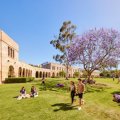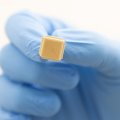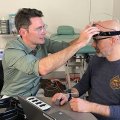The University of Queensland has been listed among the world’s top performers in the third annual Scimago Institutions Rankings World Reports.
UQ was listed at 77 in the evaluation framework that assesses quantitative data on citation and publications to reveal some of the main dimensions of the research performance of 3042 worldwide research-devoted institutions.
UQ’s position rose from 90th in 2010.
UQ was one of the top three research institutions in the Oceania region with a research output of 20,436 publications.
The group surveyed more than 80 per cent of worldwide scientific output during 2005-2009, as indexed in Elsevier’s Scopus database.
The SIR World Report, first published in 2009, is an international ranking of worldwide research institutions.
It is the work of the SCImago Research Group, a Spanish-based research organisation with members from the Spanish National Research Council and several leading educational institutions in Spain.
SIR does not promote this as a league table, but rather as a profile of each institution’s research performance.
The study is based on quantitative data of citations and publications and uses six indicators to evaluate the scientific impact, thematic specialisation, output volume, and international collaboration networks of each institution.
UQ Acting Deputy Vice-Chancellor (Research) Professor Alan Lawson congratulated the University’s researchers on such a strong performance in the latest SIR World Report.
“It’s particularly pleasing that UQ has again been recognised as one of the leading research institutions in the world," Professor Lawson said.
"This recognition comes on top of the University’s top 100 performance this year in the Times Higher Education university rankings, the QS World University rankings and the Academic Ranking of World Universities.”
Highlights of the SIR World Report 2011 include:
• The study’s NI (normalised impact) indicator showed that UQ researchers were cited 60 percent more than the world average
• The IC (international collaboration) indicator showed that 42.1 per cent of UQ publications for the period included international collaborators
• The Q1 (quality) indicator showed that 62.2 per cent of publications were published in the top 25 per cent of journals in their research fields as ordered by the SCImago Journal Rank
• The ER (excellence) indicator showed that 20 per cent of UQ publications were in the top 10 per cent of most cited papers in their research field.
Media: Jan King 07 3365 1120.
.jpg)











